GOES-5 goes up
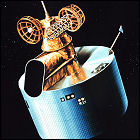 NOAA’s GOES-5 Geostationary Operational Environmental Satellite is launched from Cape Canaveral into a geosynchronous orbit over 85 degrees west longitude on Earth, a position which will change several times over GOES-5’s career until 1988, allowing it to monitor weather over the continental United States and Europe. GOES-5’s primary set of “eyes” will fail in 1984, forcing NOAA to return GOES-1 and GOES-4 to service until a replacement can be launched in 1987. Its usefulness as a weather satellite at an end, GOES-5 will be boosted into a graveyard orbit in 1990.
NOAA’s GOES-5 Geostationary Operational Environmental Satellite is launched from Cape Canaveral into a geosynchronous orbit over 85 degrees west longitude on Earth, a position which will change several times over GOES-5’s career until 1988, allowing it to monitor weather over the continental United States and Europe. GOES-5’s primary set of “eyes” will fail in 1984, forcing NOAA to return GOES-1 and GOES-4 to service until a replacement can be launched in 1987. Its usefulness as a weather satellite at an end, GOES-5 will be boosted into a graveyard orbit in 1990.

 The
The 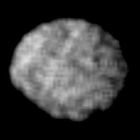 A team of American astronomers discovers what they believe is a third moon of Neptune from ground-based telescope observations, but S/1981N1 isn’t seen again for several years, so the discovery is left in the “unconfirmed” category…until it is next seen by Voyager 2 in 1989, confirming the original sighting many years later. In 1991, the International Astronomical Union will name this moon Larissa. (Voyager 2 photo of Larissa shown)
A team of American astronomers discovers what they believe is a third moon of Neptune from ground-based telescope observations, but S/1981N1 isn’t seen again for several years, so the discovery is left in the “unconfirmed” category…until it is next seen by Voyager 2 in 1989, confirming the original sighting many years later. In 1991, the International Astronomical Union will name this moon Larissa. (Voyager 2 photo of Larissa shown) ITV airs
ITV airs 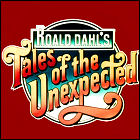 ITV airs the 43rd episode of the anthology series Tales Of The Unexpected. Gary Burghoff (M*A*S*H) and Damian London (Babylon 5) guest star.
ITV airs the 43rd episode of the anthology series Tales Of The Unexpected. Gary Burghoff (M*A*S*H) and Damian London (Babylon 5) guest star.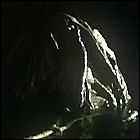 The
The  ITV airs
ITV airs 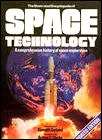 The first edition of British author Kenneth Gatland’s detailed non-fiction book “
The first edition of British author Kenneth Gatland’s detailed non-fiction book “ Columbia Records releases an
Columbia Records releases an 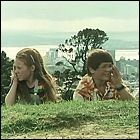 The
The  ITV airs
ITV airs 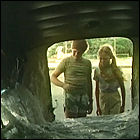 The
The  ITV airs
ITV airs 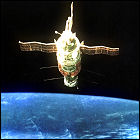 Launched unmanned in April, the Kosmos 1267 space station module docks automatically with the recently vacated Salyut 6 space station – the first-ever on-orbit expansion of a previously launched space structure. The module, a hardware holdover from the abandoned Almaz military space station program, provides engineers on the ground with information needed to safely add modules to the upcoming Salyut 7 space station to expand its habitable space. The experience gained will also be instrumental in the construction of the Mir station and the International Space Station. Kosmos 1267 remains docked to Salyut 6 until the combined structure tumbles out of orbit in 1982.
Launched unmanned in April, the Kosmos 1267 space station module docks automatically with the recently vacated Salyut 6 space station – the first-ever on-orbit expansion of a previously launched space structure. The module, a hardware holdover from the abandoned Almaz military space station program, provides engineers on the ground with information needed to safely add modules to the upcoming Salyut 7 space station to expand its habitable space. The experience gained will also be instrumental in the construction of the Mir station and the International Space Station. Kosmos 1267 remains docked to Salyut 6 until the combined structure tumbles out of orbit in 1982.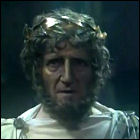 ITV airs
ITV airs 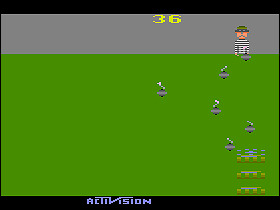 Activision releases a trio of cartridges for the Atari VCS home video game system:
Activision releases a trio of cartridges for the Atari VCS home video game system:  Electric Light Orchestra‘s ninth album, the science fiction/time travel concept album
Electric Light Orchestra‘s ninth album, the science fiction/time travel concept album 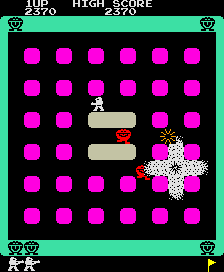 Better known for making jukeboxes and speakers, Rock-Ola dips its toes into the video game industry by releasing
Better known for making jukeboxes and speakers, Rock-Ola dips its toes into the video game industry by releasing 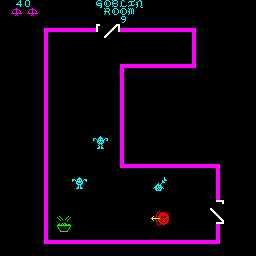 Exidy’s swashbuckling coin-op video game
Exidy’s swashbuckling coin-op video game